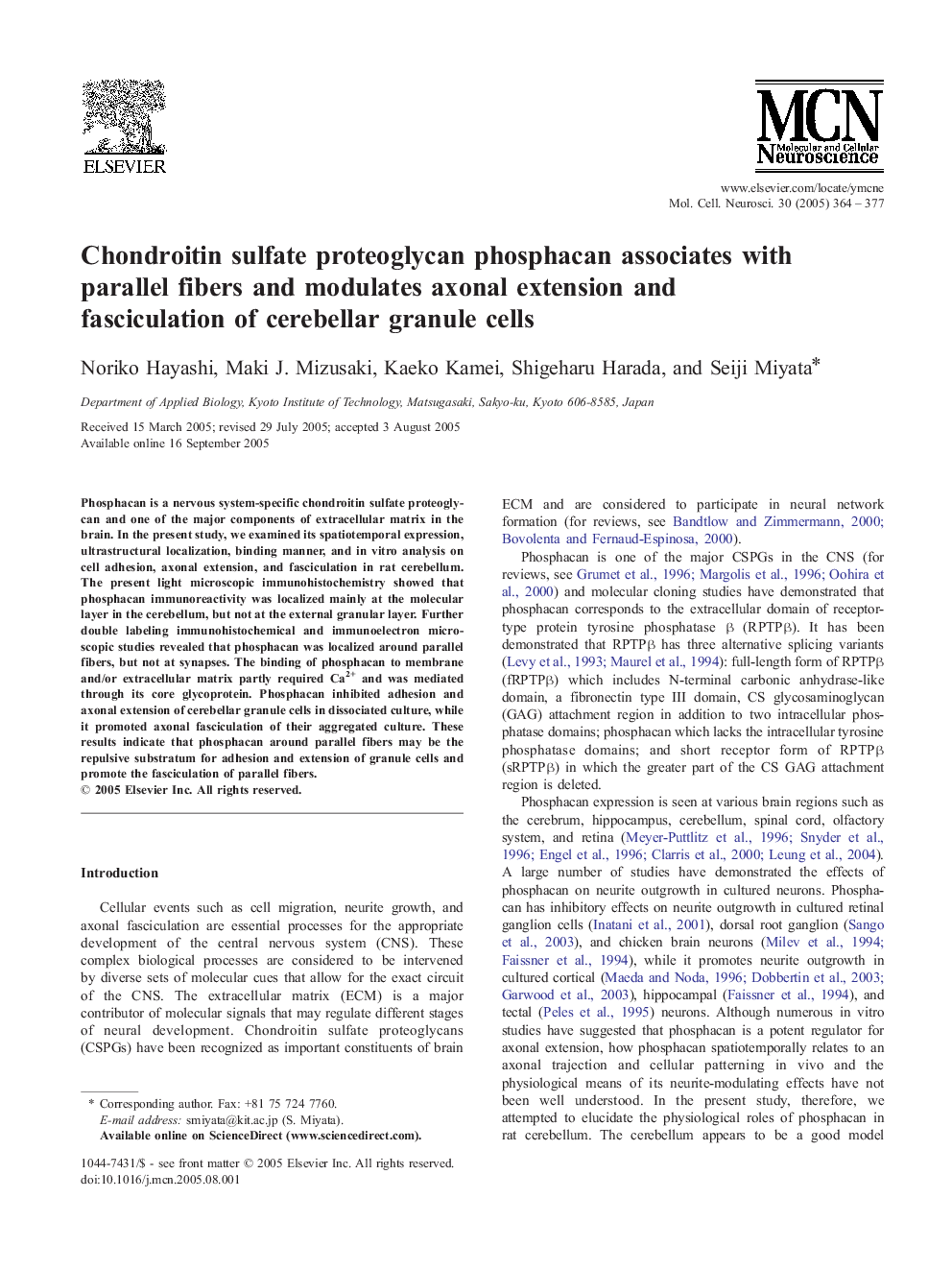| Article ID | Journal | Published Year | Pages | File Type |
|---|---|---|---|---|
| 10956805 | Molecular and Cellular Neuroscience | 2005 | 14 Pages |
Abstract
Phosphacan is a nervous system-specific chondroitin sulfate proteoglycan and one of the major components of extracellular matrix in the brain. In the present study, we examined its spatiotemporal expression, ultrastructural localization, binding manner, and in vitro analysis on cell adhesion, axonal extension, and fasciculation in rat cerebellum. The present light microscopic immunohistochemistry showed that phosphacan immunoreactivity was localized mainly at the molecular layer in the cerebellum, but not at the external granular layer. Further double labeling immunohistochemical and immunoelectron microscopic studies revealed that phosphacan was localized around parallel fibers, but not at synapses. The binding of phosphacan to membrane and/or extracellular matrix partly required Ca2+ and was mediated through its core glycoprotein. Phosphacan inhibited adhesion and axonal extension of cerebellar granule cells in dissociated culture, while it promoted axonal fasciculation of their aggregated culture. These results indicate that phosphacan around parallel fibers may be the repulsive substratum for adhesion and extension of granule cells and promote the fasciculation of parallel fibers.
Related Topics
Life Sciences
Biochemistry, Genetics and Molecular Biology
Cell Biology
Authors
Noriko Hayashi, Maki J. Mizusaki, Kaeko Kamei, Shigeharu Harada, Seiji Miyata,
